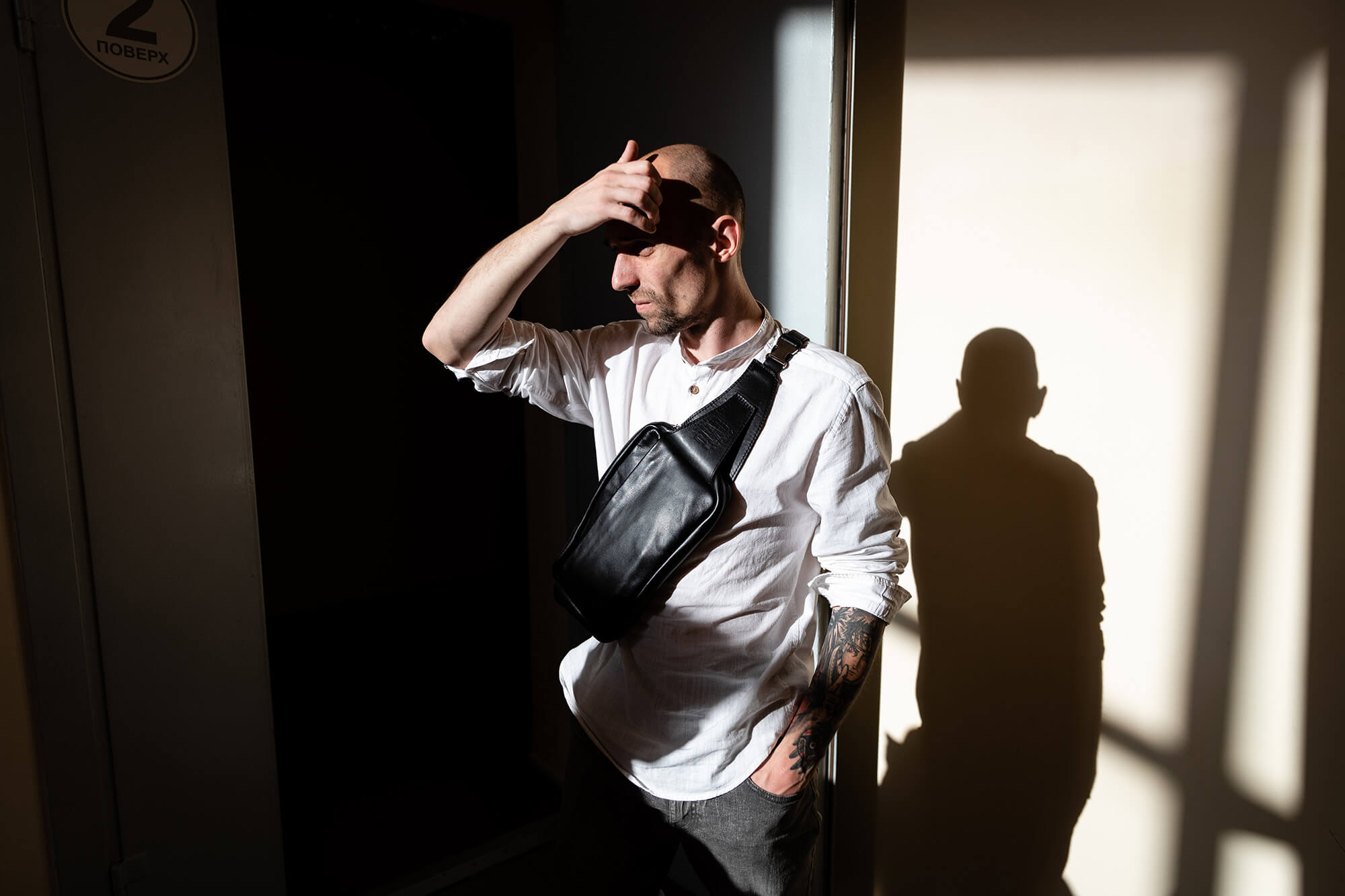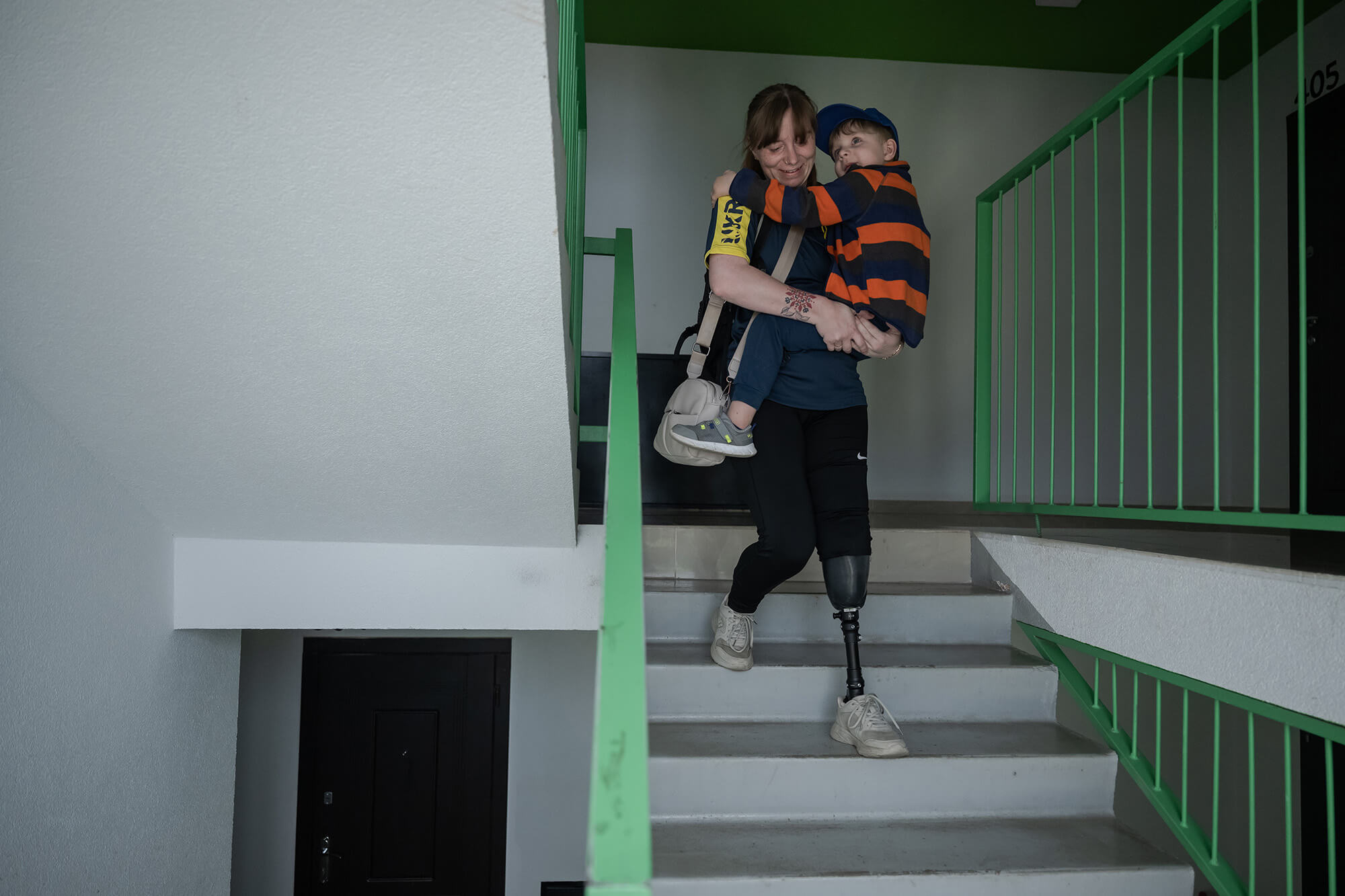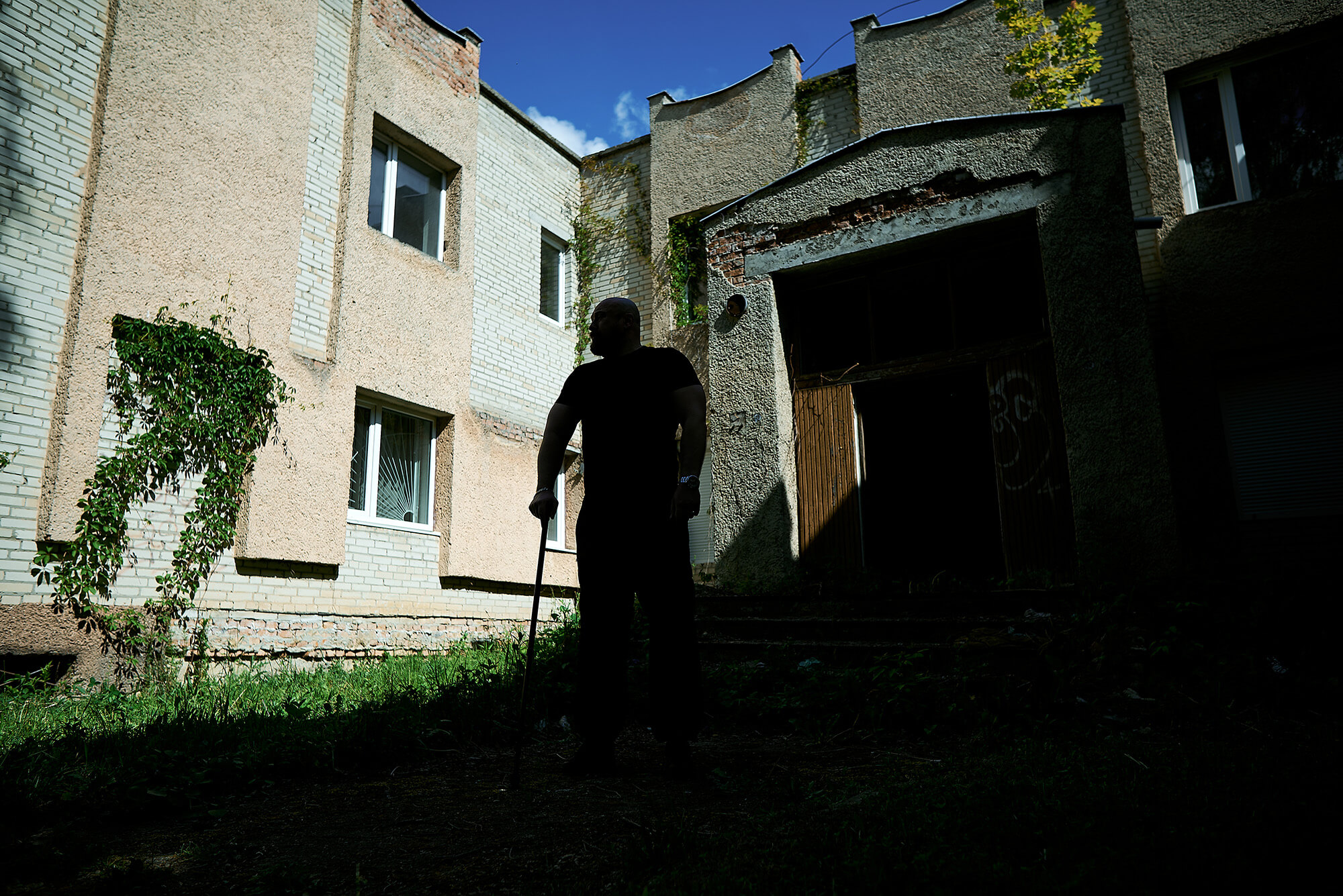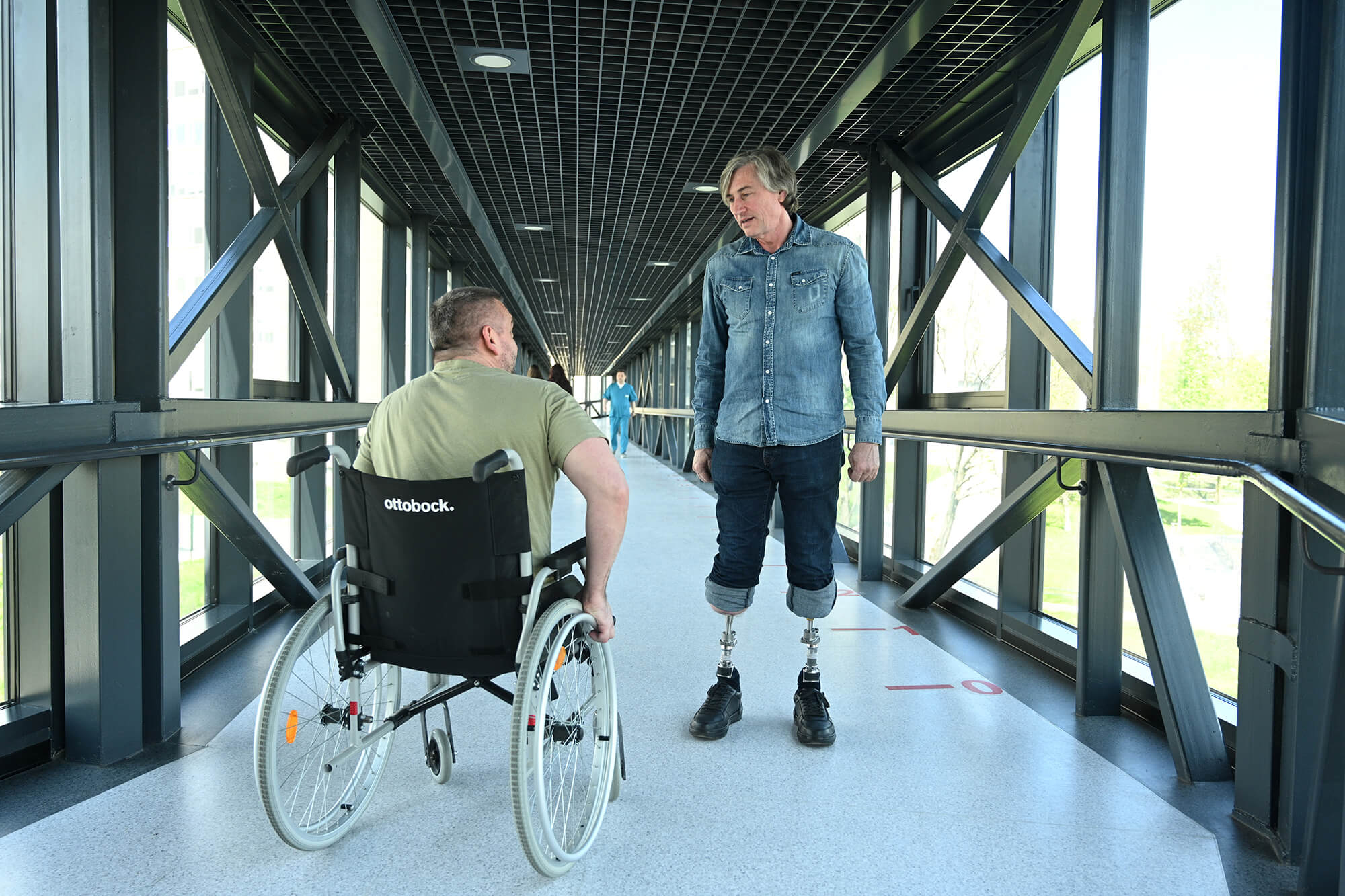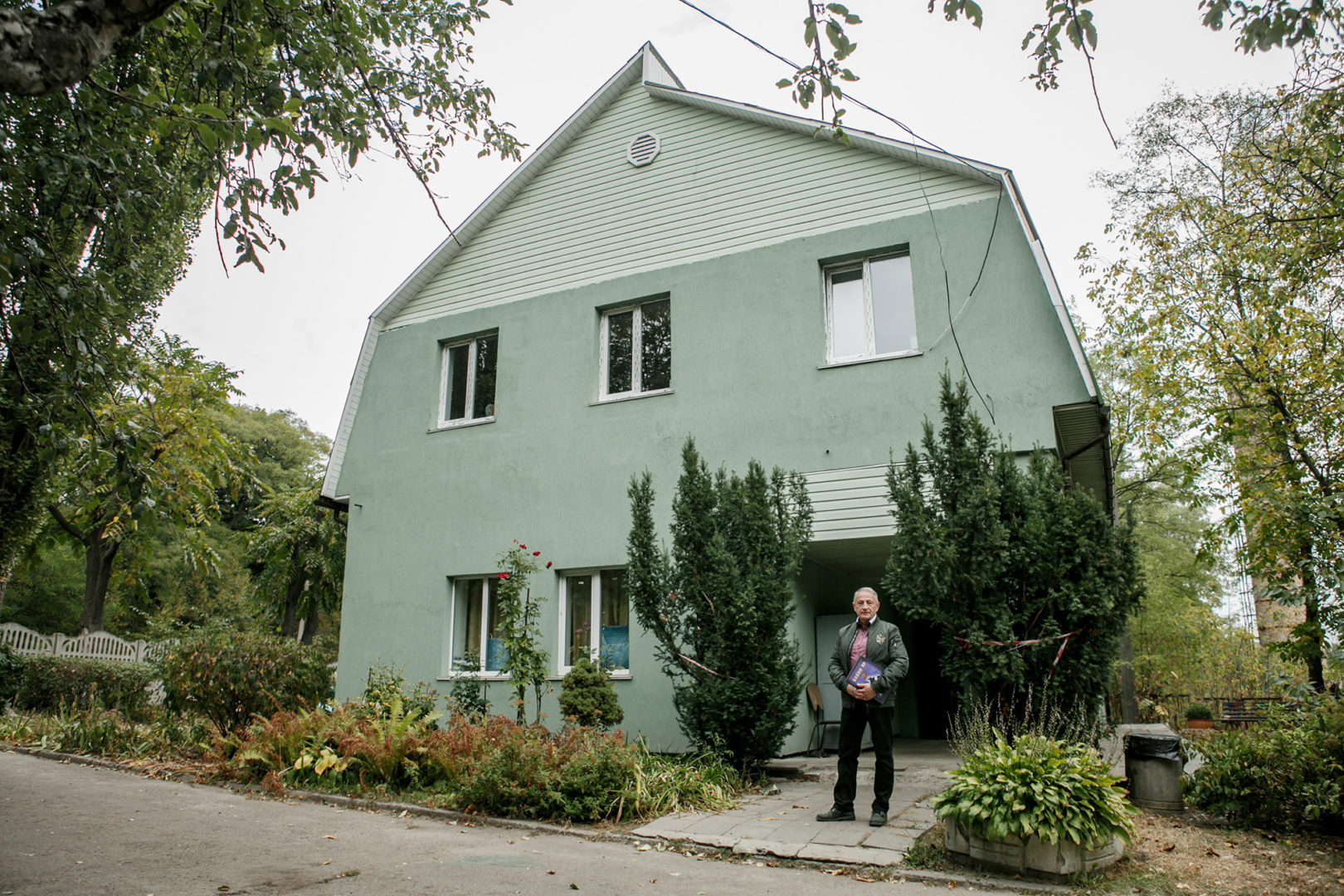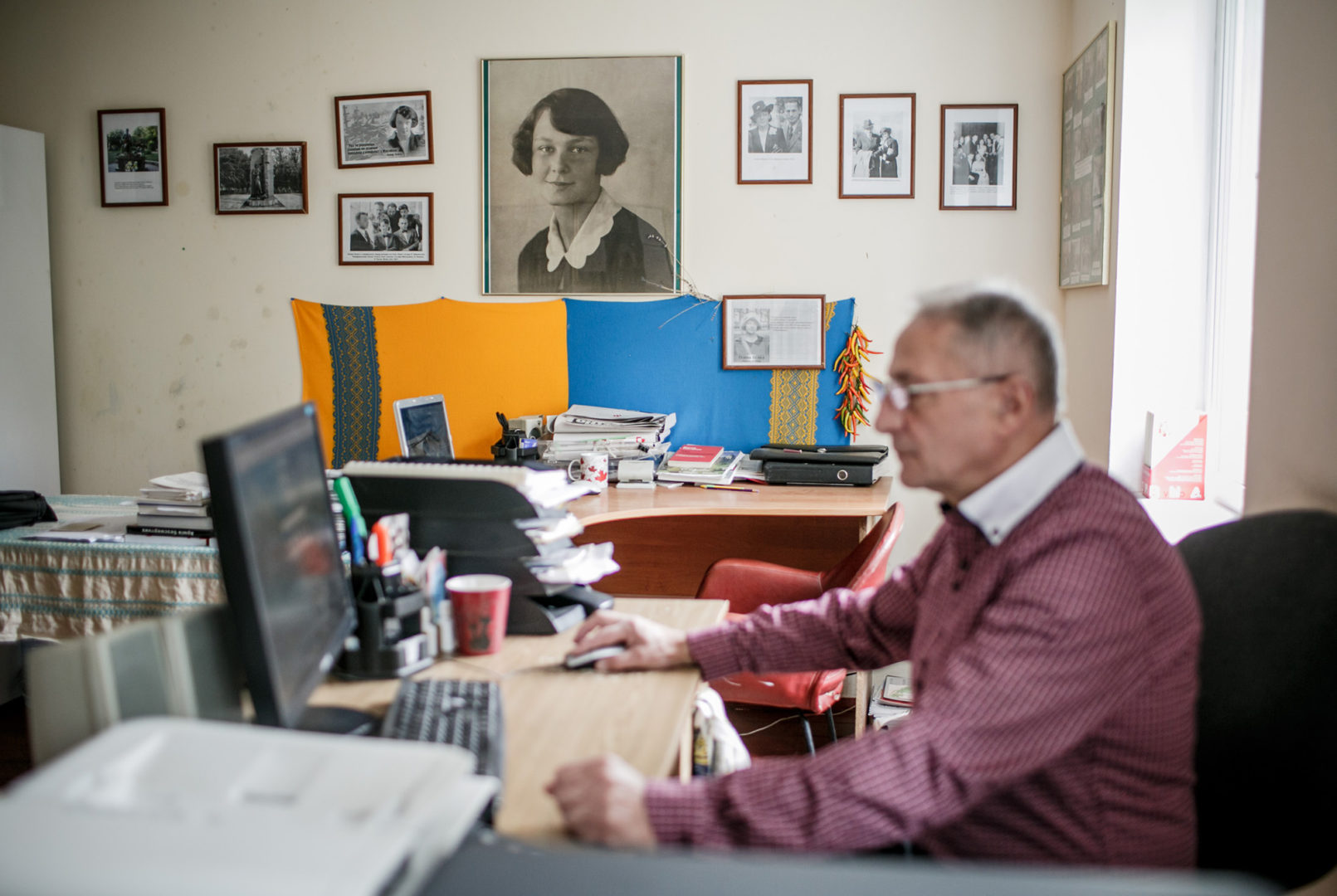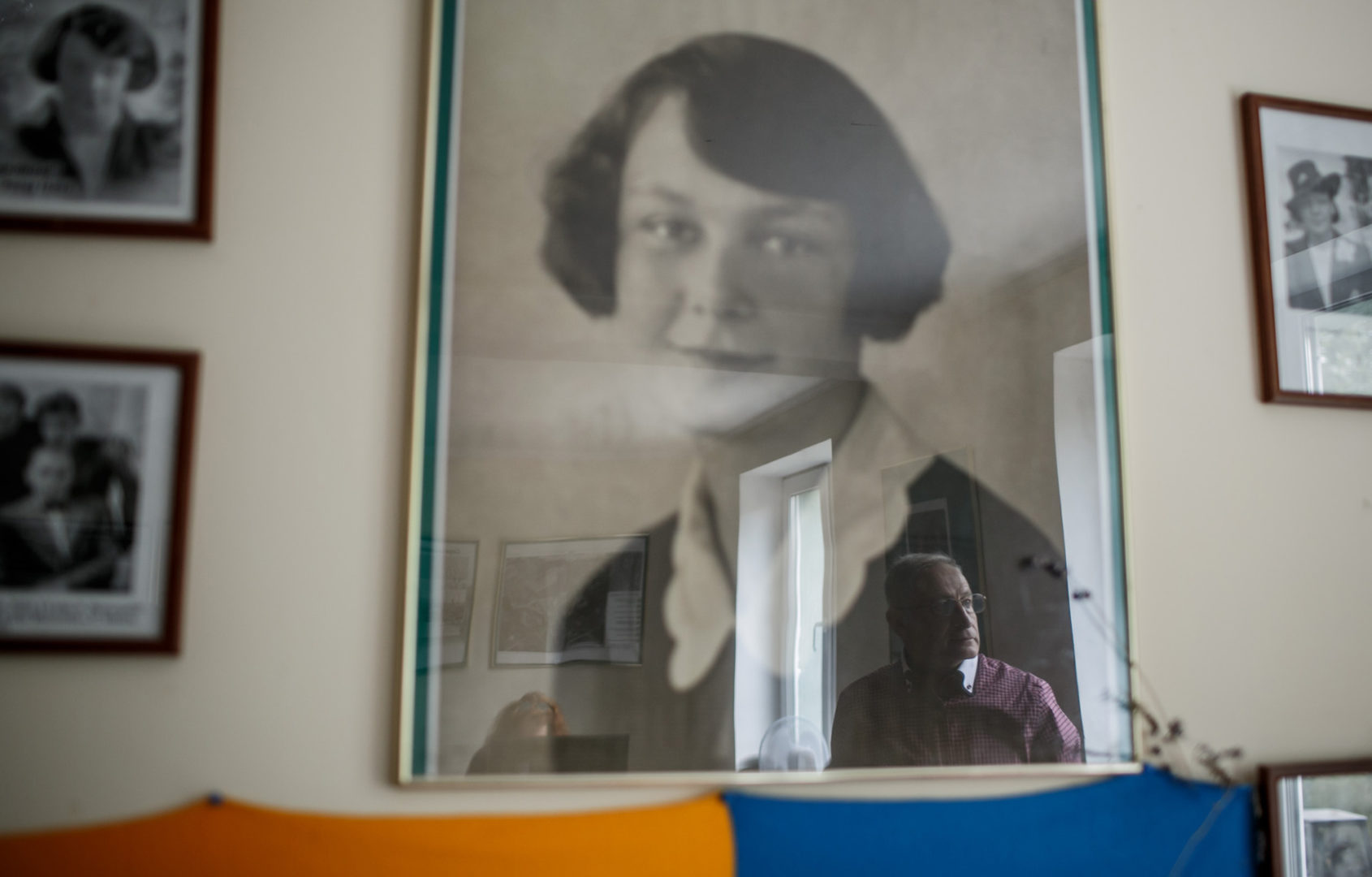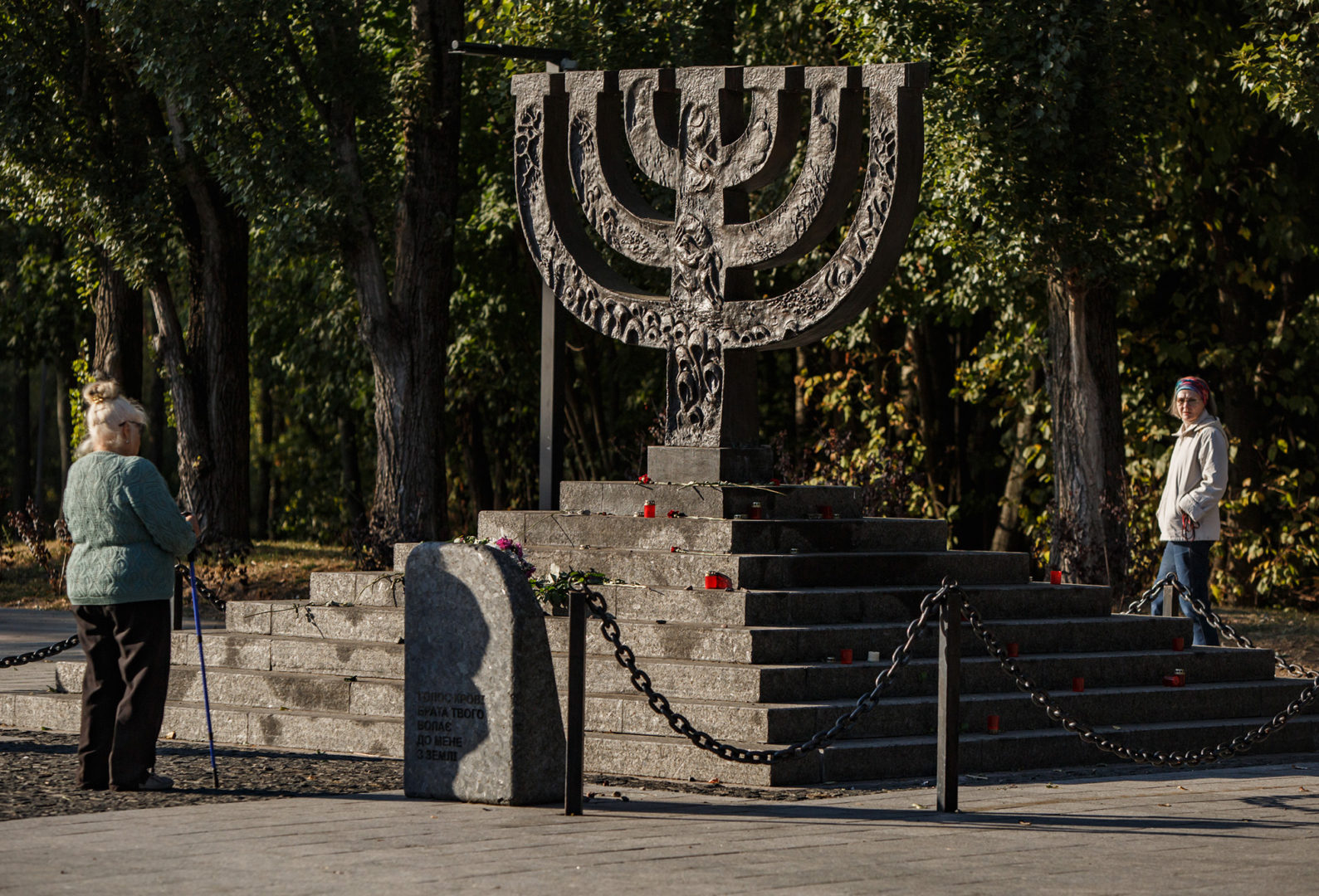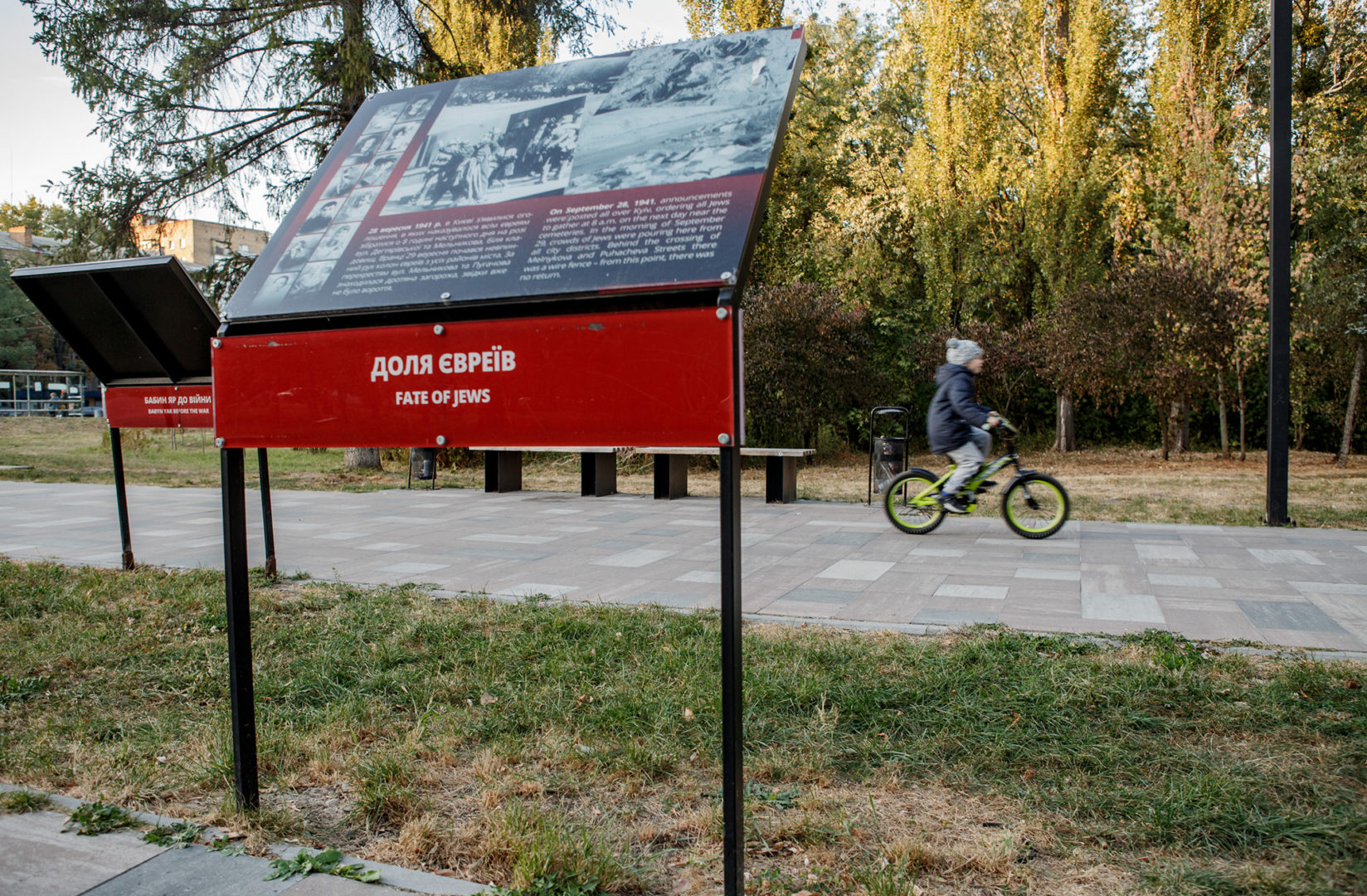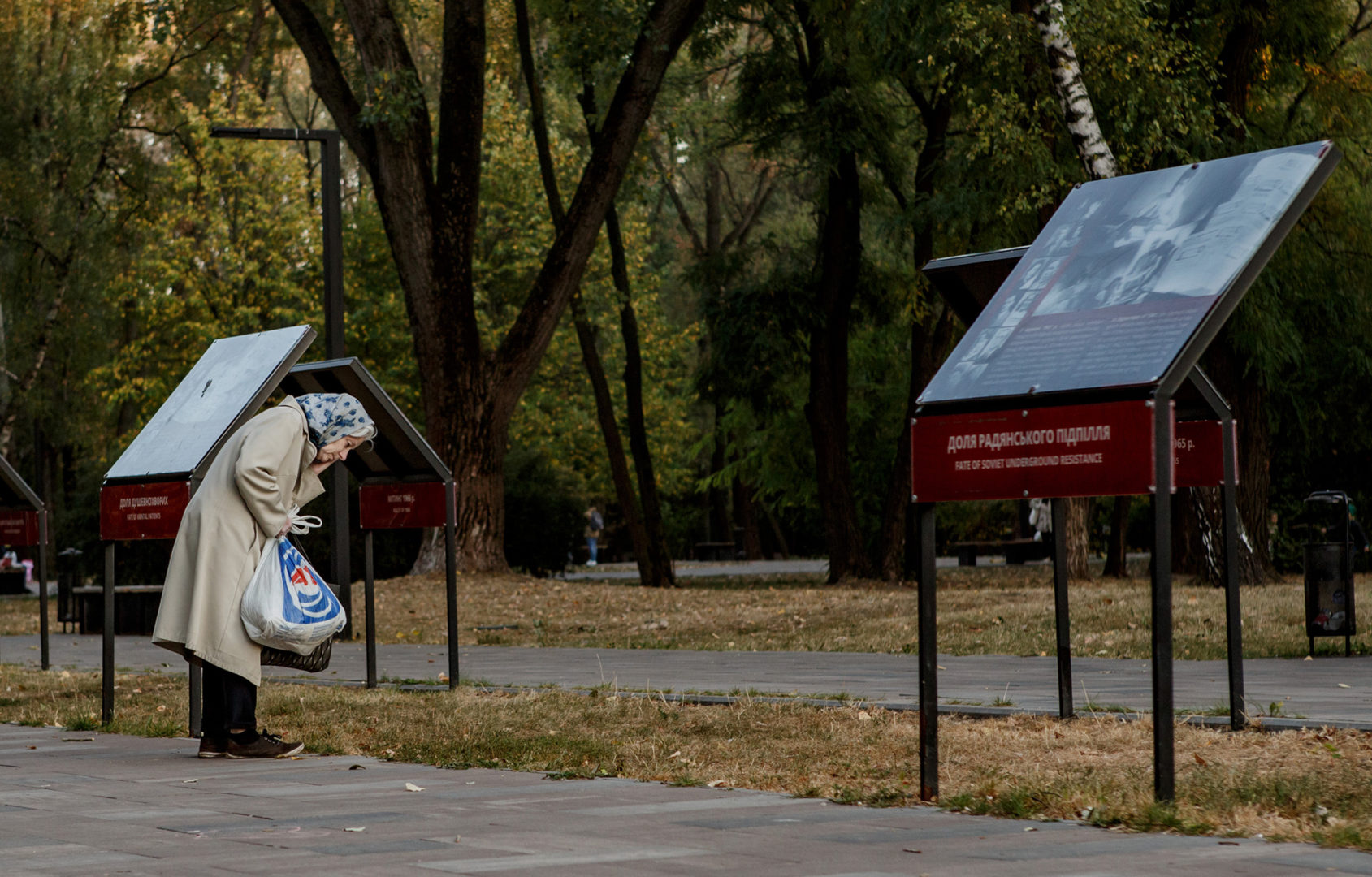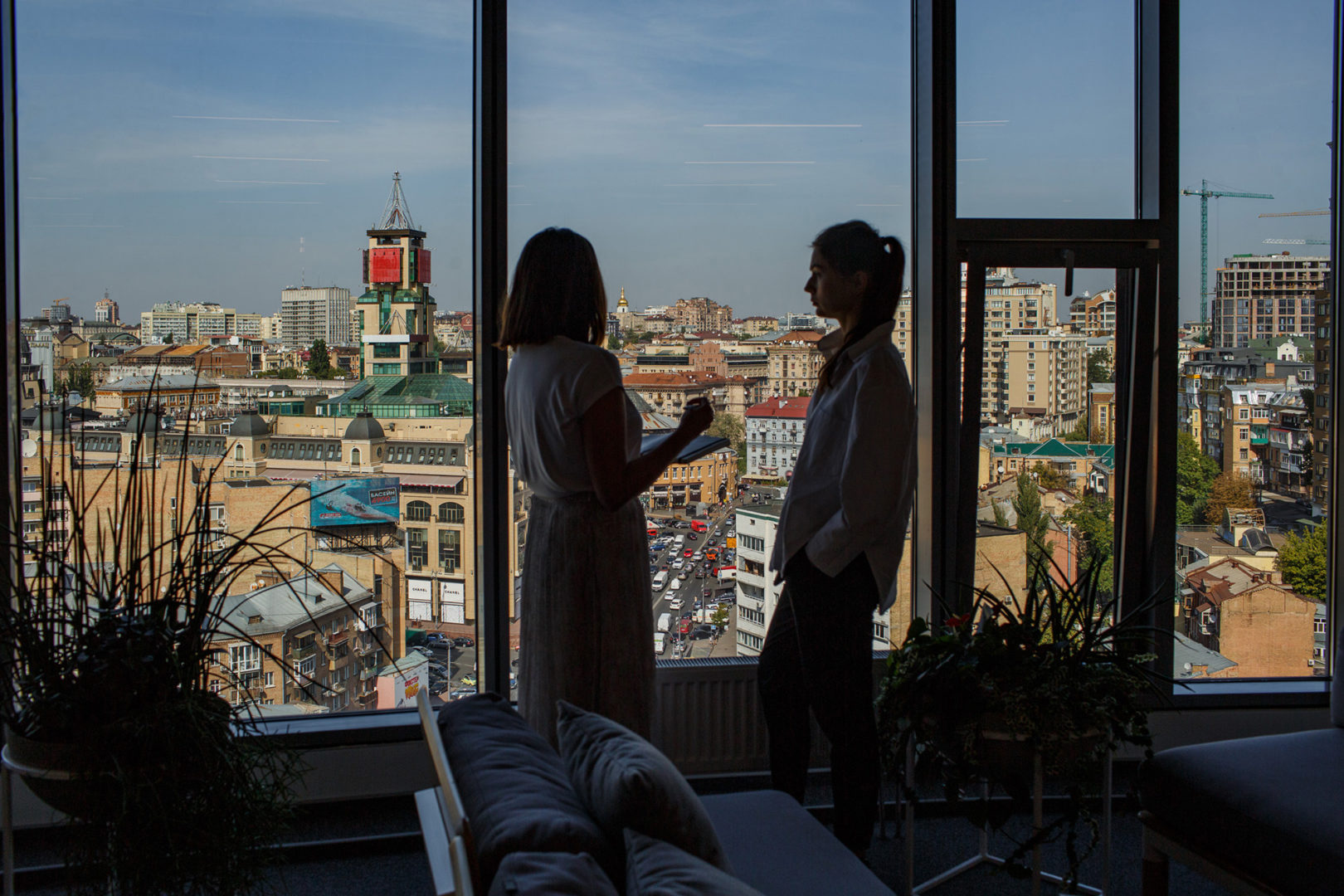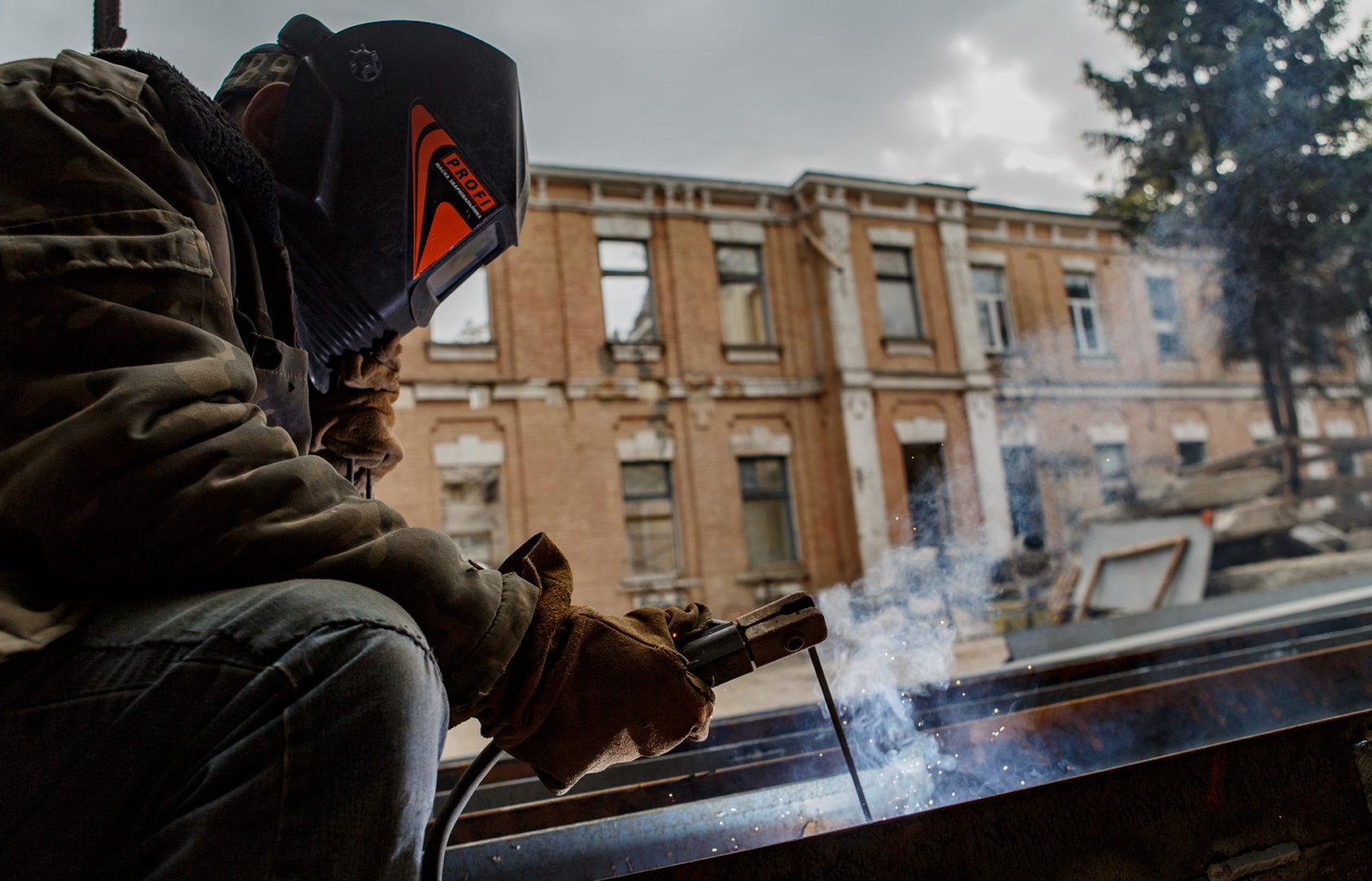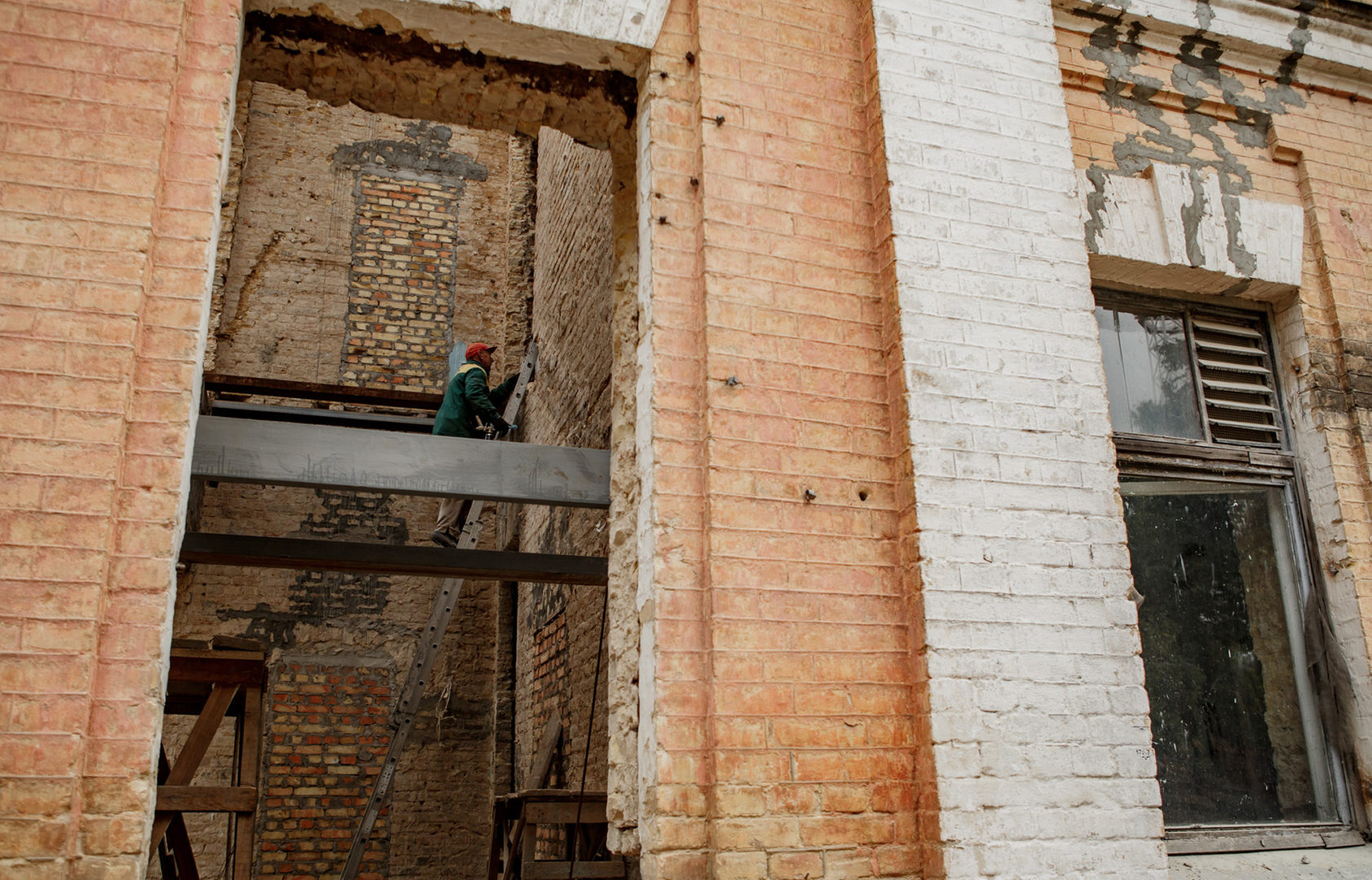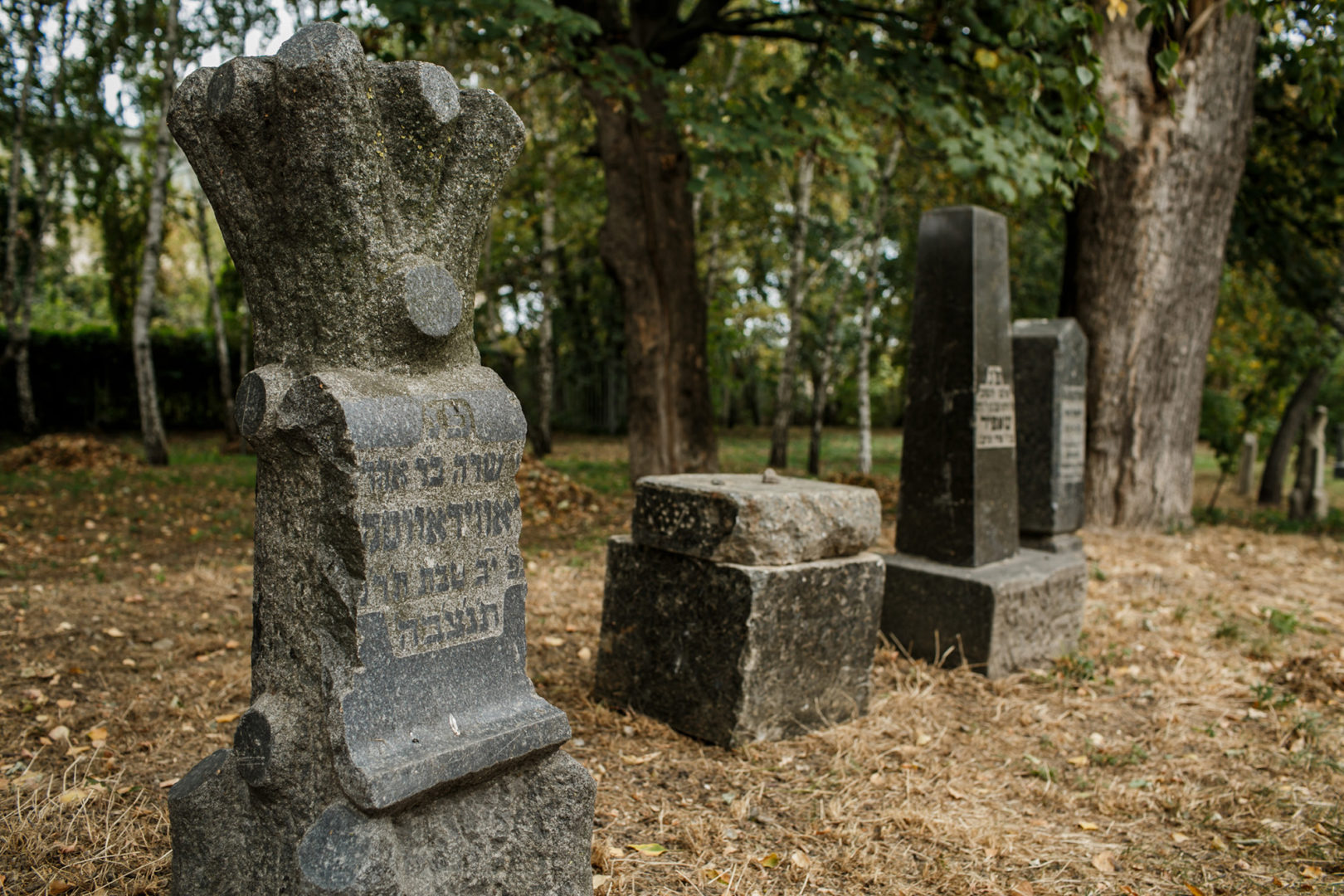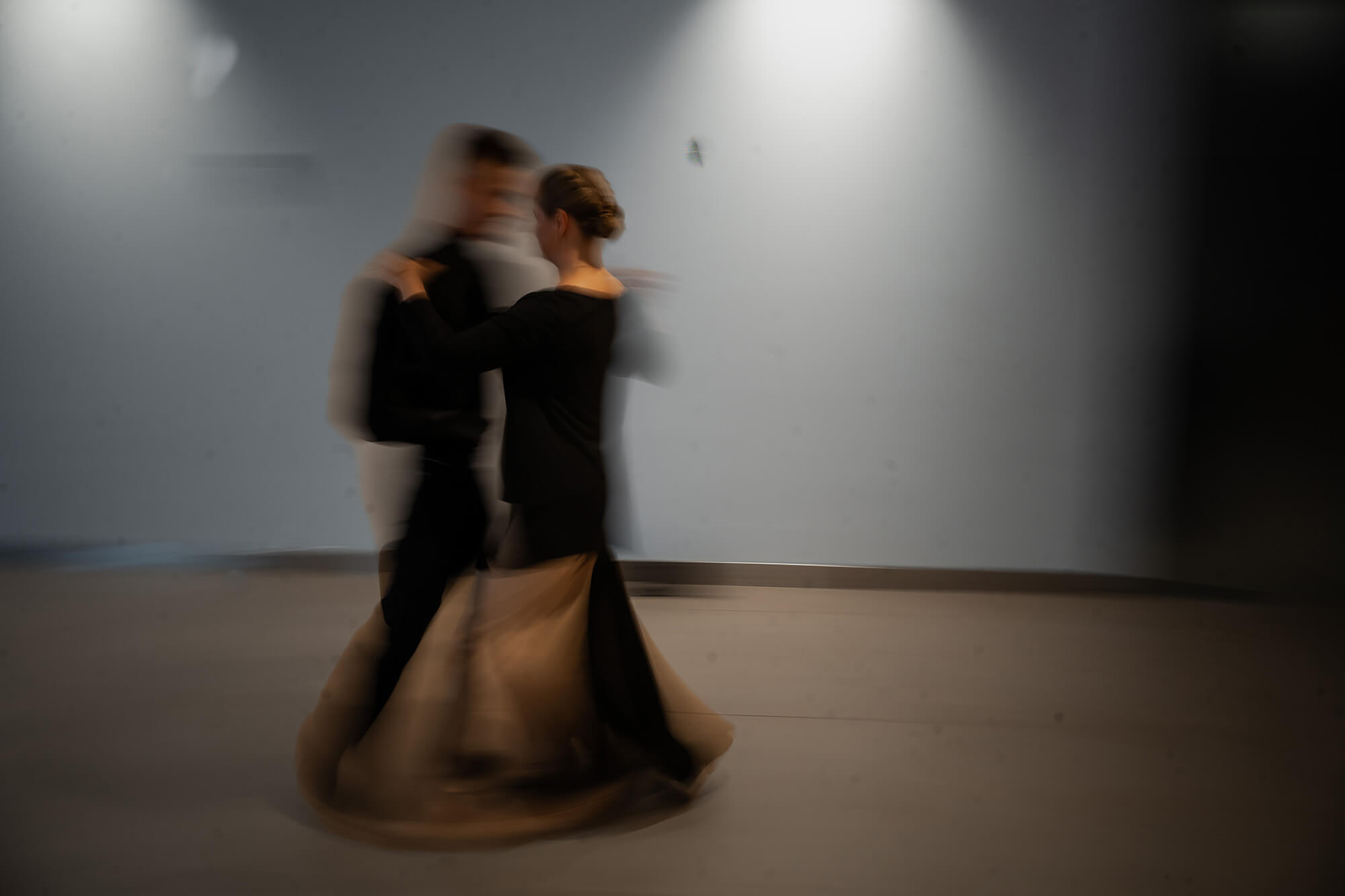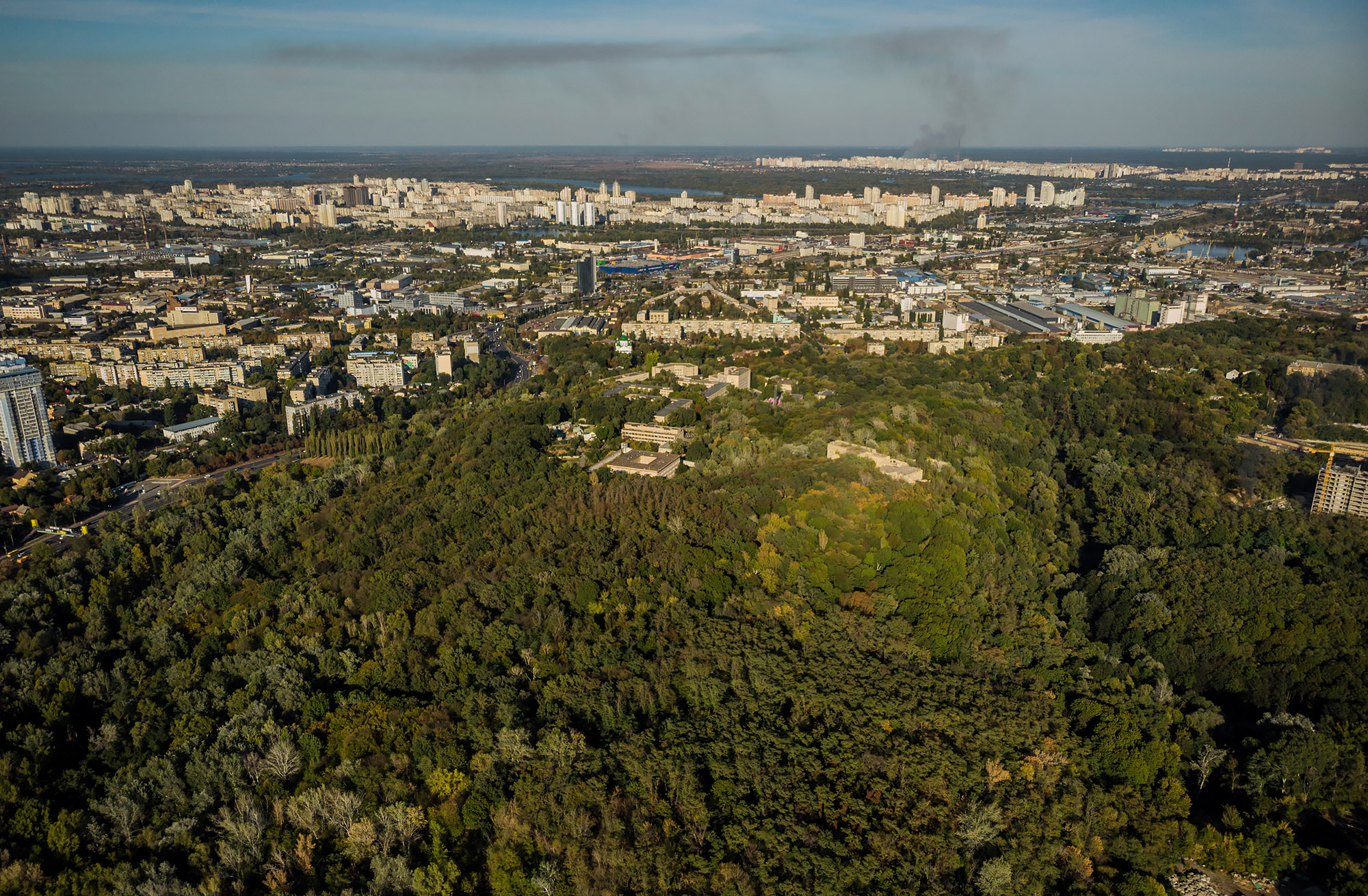
The Ravine of Memory
14th floor in an office tower in the heart of Kyiv. White walls, glass doors. Apple computer screens. A friendly manager greets me as I enter. Another one offers coffee while I’m looking at their library. Or the roofscape of Pechersk in the window.
I was invited to the office of the Babyn Yar Holocaust Memorial Center to attend a partially private meeting of historians. Here, the research is led by a reputable scientist from the Netherlands. . .
No. I should start another way.
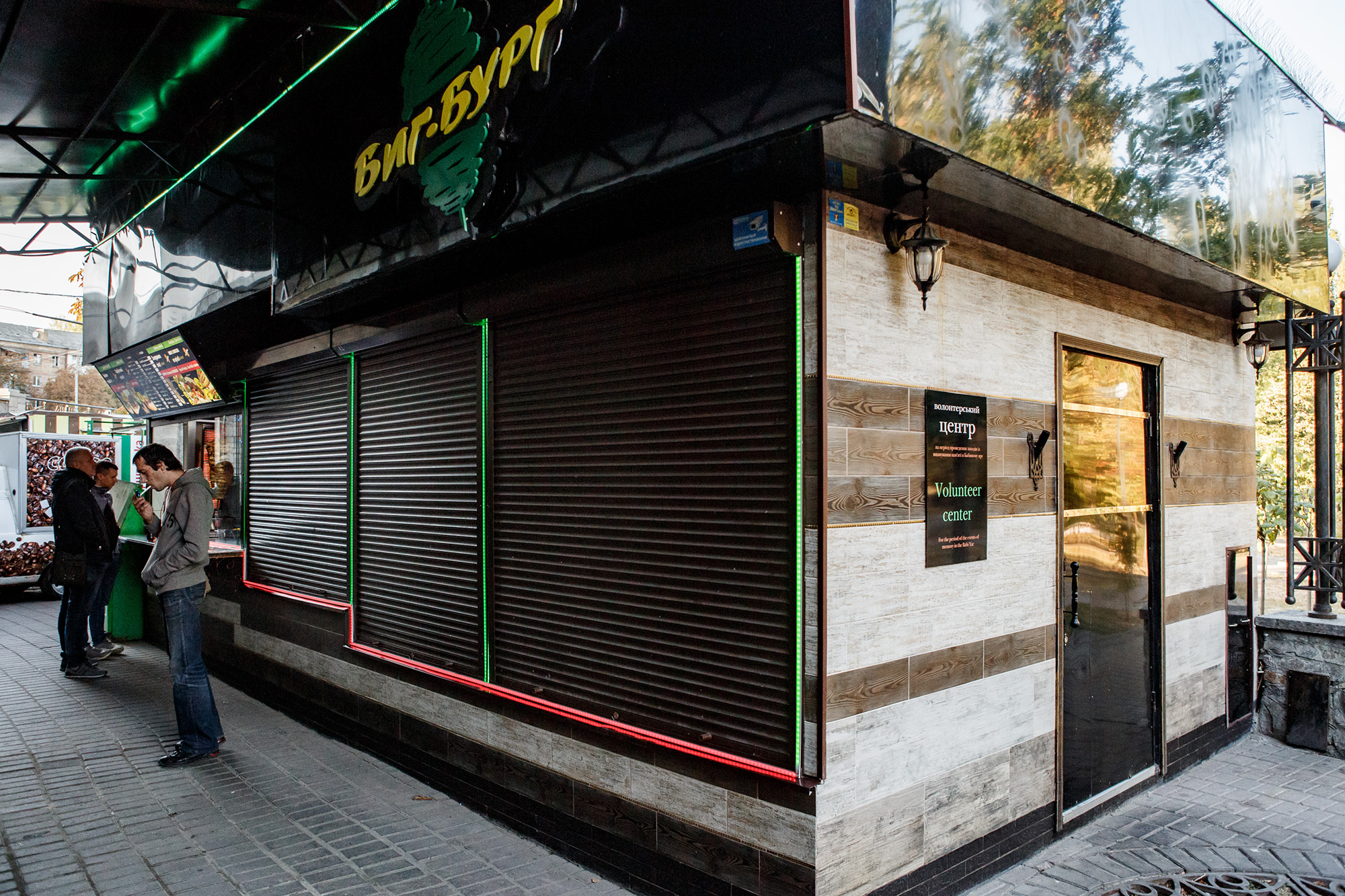
There’s a doner kebab stand at the exit of the Dorohozhychi metro station. The place is a bit strange. A trident and a flagpole (with no flag) are nailed to the wall. Inside, you can notice archive photos of Babyn Yar, glued to pieces of brown cardboard. They feature people shot to death. Near the till, there is a narrow bookcase with front glass doors that looks like those in a regional museum. It is filled with books about the Holocaust and Babyn Yar. The glass doors are locked.
“Does anyone take this to read?” I ask the chef as carelessly as possible.
“Nah, we don’t even have a key,” he says, keeping his head down and chopping the meat.
To unravel the mystery of the “doner kebab museum,” I meet with Mykhailo Hutor. He heads the scientific department of another, not so fancy, institution—Babyn Yar National History and Memorial Reserve. From its windows, you won’t see the city’s landscapes, and instead of state-of-the-art technology, there is only an old laptop, indecently bulky as of 2019.
Three Dozen Landmarks
Hutor explains over the phone how to find the reserve: “From the metro, head along the Alley of Sorrow to the monument to the shot children, then turn right. As you approach the Menorah, you will see a green building.”
I’m grateful for the explanations, because the premises of the reserve administration looks more like a storage for shovels and old swings. In Babyn Yar, everything seems to be different from what it really is. Even the Yar itself (yar is the Ukrainian word for “ravine” — R.). At a first glance, the symbol of tragedy, which is nearly the synonym for the Holocaust in Ukraine, looks like a regular park.
It’s a Sunday in August. Some people are having their morning shot of alcohol on the benches between the Menorah and the Children’s Monument. The sober ones are walking their dogs who know all the ins and outs here: the monument to the executed Roma, to the OUN members, to Tetiana Markus—member of an anti-Nazi underground, to the victims of Nazism, to the priests. Over 30 landmarks to commemorate those who died here in 1941-1943. Each of them speaks out in its own language: the language of bronze sculpture, granite stone, wooden cross.
Mykhailo Hutor comes out of the metro: grey-haired, skinny and tanned, wearing a light tee and jeans. He came to work on Sunday specifically for my interview.
He says his work in the reserve is “idea-driven,” “blaming” his grandmother Kateryna from the town of Pidhaitsi in Ternopil region. During World War II, she saved the lives of her neighbors—a Jewish family—and after the war, Israel named her the Righteous Among the Nations. Mykhailo works here because “the tragedy has affected his family, as well.”
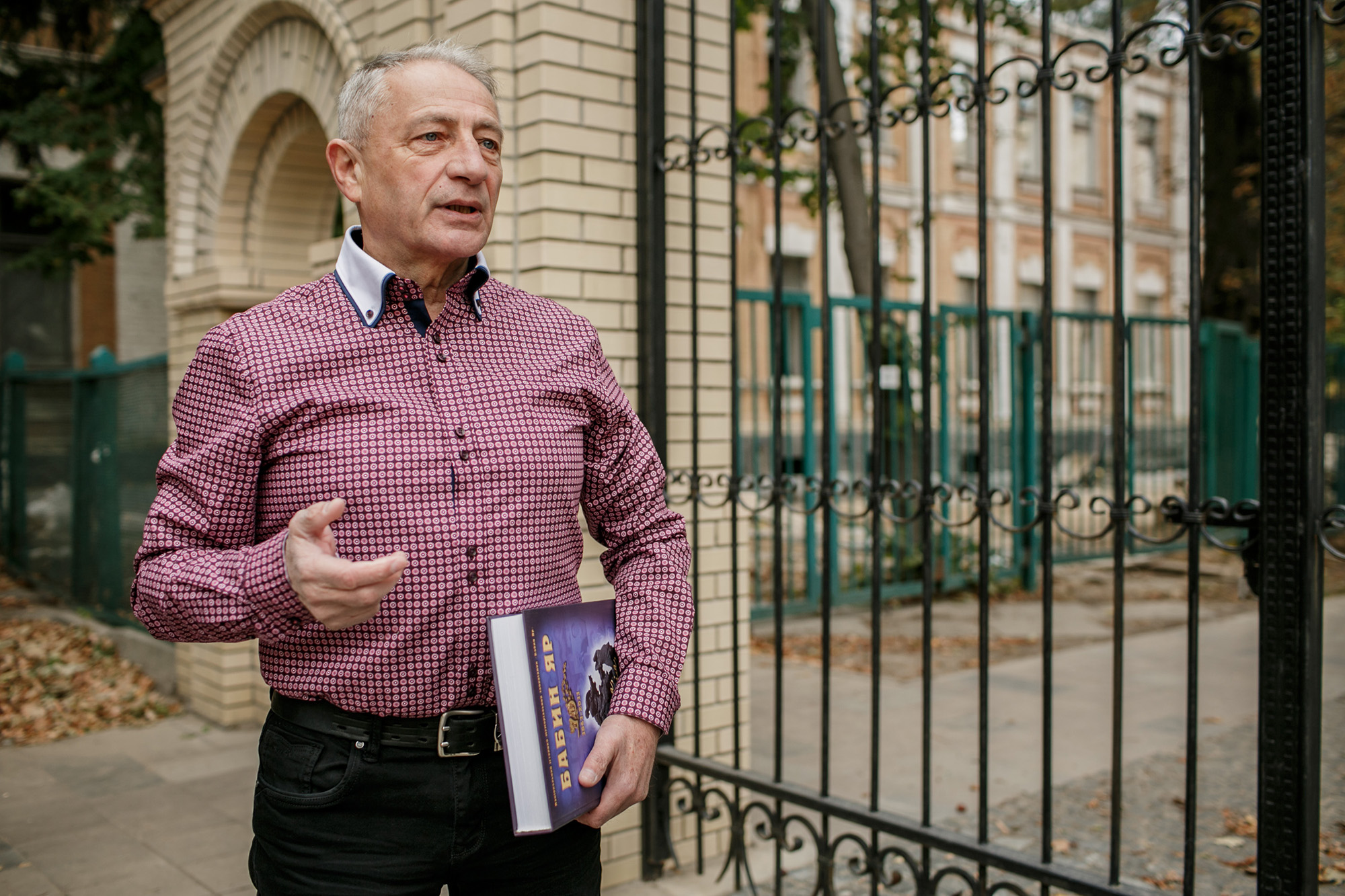
The National Reserve was established in 2007, but the administration moved to the territory of Babyn Yar only in 2016. The first date is the 65th anniversary of the shootings, and the second is the 75th anniversary. How would we live without these “anniversaries?”
Black Suits, Red Floor
On September 29, 2016, Ukraine commemorated the 75th anniversary of the shootings in Babyn Yar (the Volunteer Center, which is now the doner kebab stand, was opened near the Dorohozhychi metro station in connection with these very events). This is when the Babyn Yar Holocaust Memorial Center — 14th floor, white walls, Pechersk scenery—publicly announced its intention to open its doors by the next, 80th, anniversary. Kyiv Mayor Vitali Klitschko named this project among one of his key missions as the city mayor, and President Petro Poroshenko said that the memorial would be a triumph of humanistic values in the study of historical truth.
The photos from those events feature several men in dark suits. Premier Groysman, the Klitschko brothers, businessman Pinchuk, singer Vakarchuk—they are the ones we can recognize right away. Others include a former Soviet dissident and today’s Israeli politician—Natan Sharansky, Chief Rabbi of Kyiv and Ukraine—Yaakov Dov Bleich, Russian businessmen—Pavel Fuchs, Mikhail Friedman, and Herman Khan. Back then, the men in suits said that Ukraine was the only country that had no institution of memory dedicated to the Holocaust tragedy. And they promised that the Memorial Center would become such an organization.
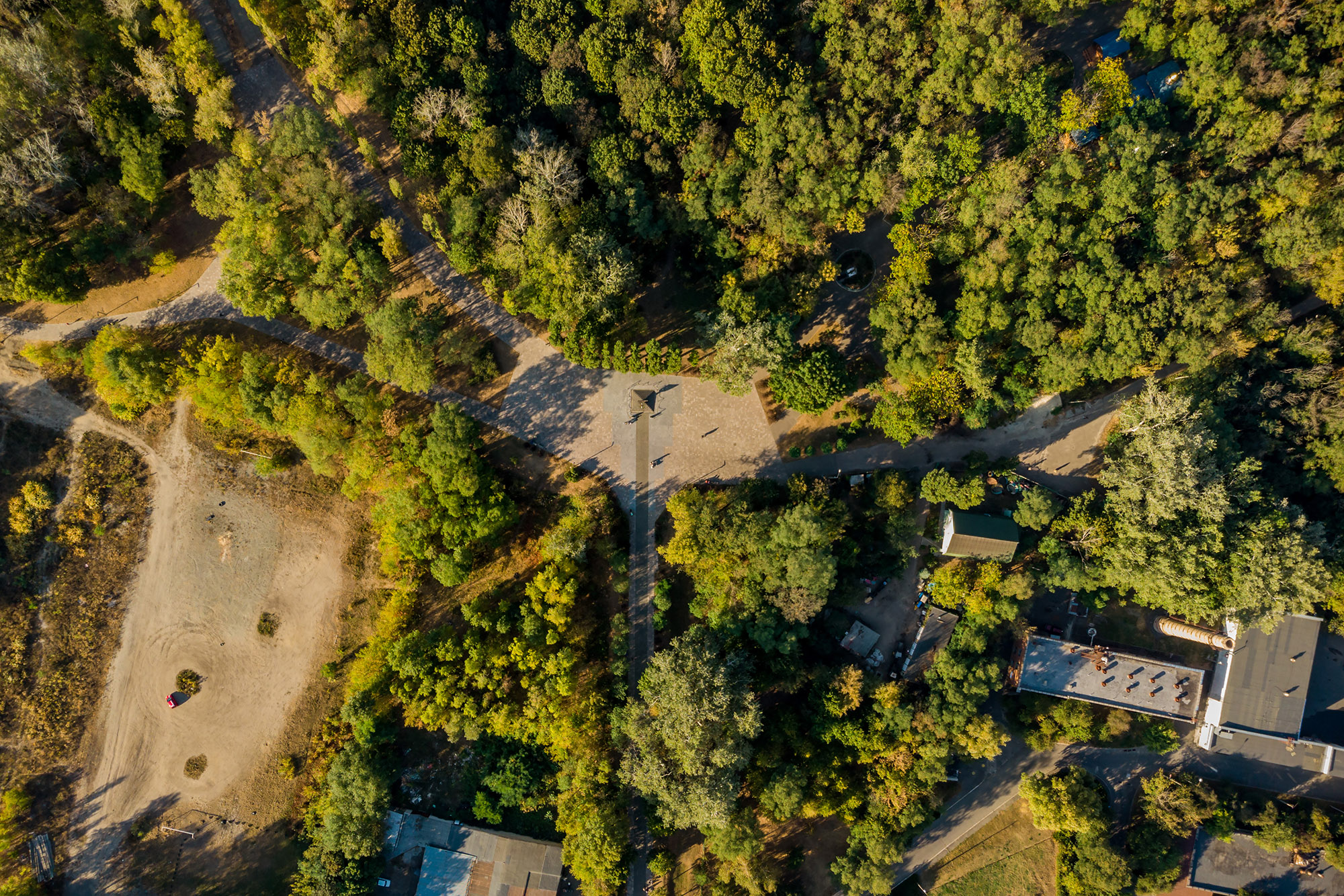
While the venerable gentlemen were photographed against a minimalist banner with the logo of the new institution, Babyn Yar Reserve was occupying a room with a shabby floor of the color of dry blood. Soon, the room would be decorated with the national flag and a portrait of Olena Teliha, get a kettle and an electric hot plate, as well as a printout on the wall reading: “As some Jew used to say, ‘Don’t be so nervous and dramatic—you won’t get paid for that’.”
2016 would pass. The Reserve would do its job quietly contrast to the loud Memorial Center that would present its work in the Verkhovna Rada and organize an exhibition in the British Parliament. Meanwhile, the mocking kebab stand with the books about the Holocaust would keep standing near the metro station.
28 Years
Over the last 28 years, the statement of the “black suits” was not the first attempt to honor the memory of those killed in Babyn Yar.
In Soviet times, the fact that Babyn Yar was the place of the Jewish tragedy was swept under the rug. In 1976, a monument to “the Soviet citizens and prisoners of war” was unveiled here for the 35th anniversary of the tragedy. The monument said nothing about the Jewish victims.
The ban to visit Babyn Yar was gone together with the Soviet government. But there came indifference. The controlled memory policy was replaced by complete lack of remembrance. Today, the society creates this memory itself
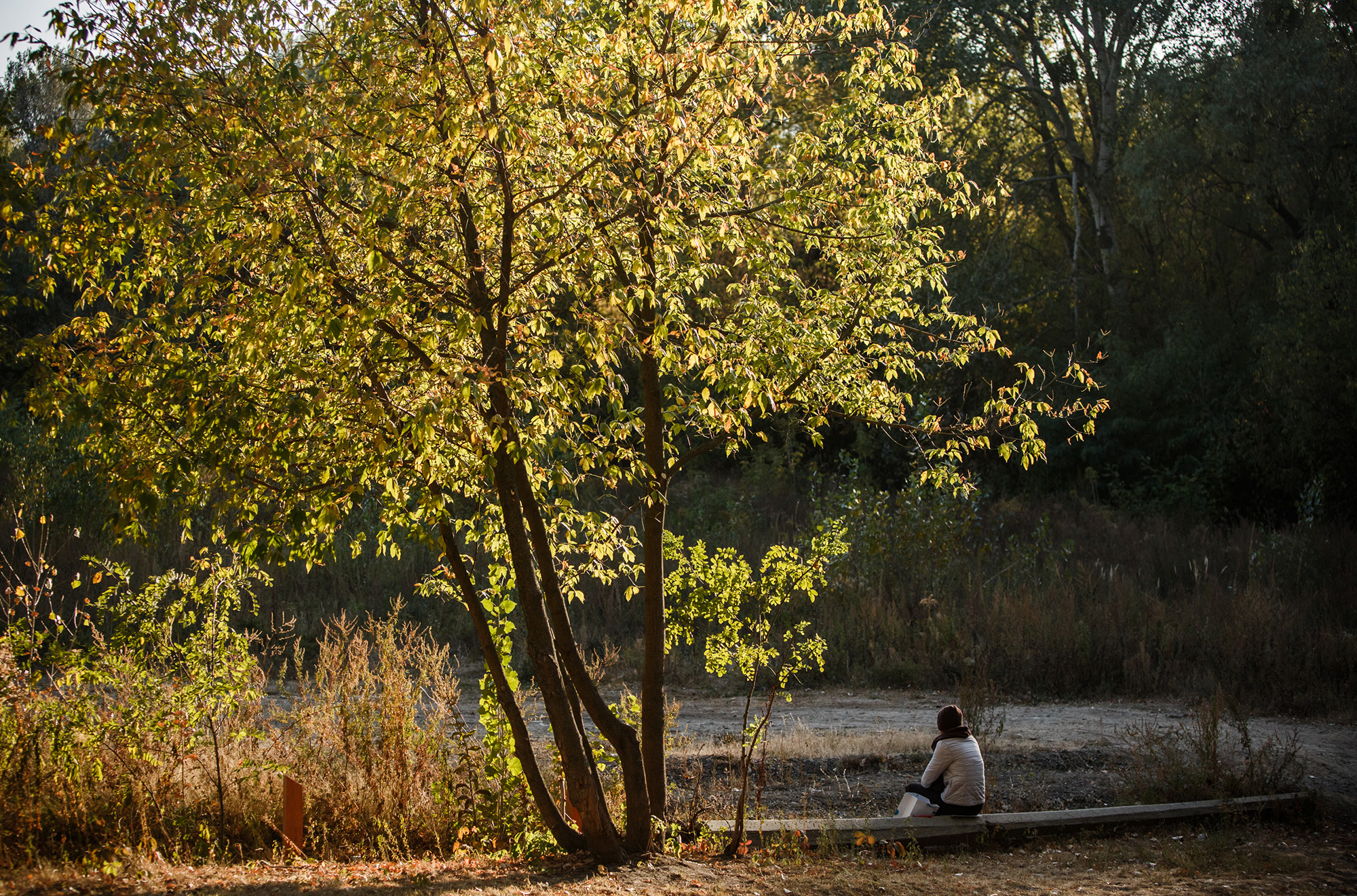
September 1991 was the 50th anniversary of the shootings. In August, the Declaration of Independence of Ukraine was adopted, and people strived for the changes. One of them was a young man Anatoly Podolsky. Within five years, he would defend his thesis about the Nazi extermination of Jews in Ukraine, and later would establish the Ukrainian Center for the Holocaust Studies.
He says that I wouldn’t believe how many people came to Babyn Yar in 1991, surprised that they could now just do it as simple as that, without any fear of persecution.
In Soviet times, Kyiv Jews feared going to Babyn Yar. Podolsky recalls his father taking him there only once, when he was about six.
“The police did not allow that. I still can see his pale face,” the historian says about his father in an interview for Historians—a Ukrainian scientific publication.
His father’s mother and sisters were killed in Babyn Yar. And the Soviet authorities, Podolsky says, killed the memory about the Kyiv Jews.
Almost all of Anatoly’s hopes of those days never fulfilled. The ban to visit Babyn Yar was gone together with the Soviet government. But there came indifference. The controlled memory policy was replaced by complete lack of remembrance. Today, Podolsky says, the society creates this memory itself, as evidenced by all those landmarks in the Yar.
In 1991, the first Jewish monument was opened here—the Menorah. Nearly 100,000 people were shot dead by the Nazis in Babyn Yar. Of them, 60,000-70,000 were Jews. Others include Roma, people with mental disabilities, members of the OUN, priests, and prisoners of war. The exact number of those killed is unknown. But we have this figure: 33,771 Jews were killed in just two days, on 29-30 September 1941. However, a single Menorah that speaks out purely about the Jewish memory is not enough. And the Menorah itself hardly reflects the scope of the tragedy.
Later, many monuments were arranged for, yet none looked a decent memorial—the one that would say it all. But is it at all possible to create a memorial that would reflect the scale of the Holocaust tragedy? Ukraine joined this global discussion, and starting from 1991, several projects were proposed for Babyn Yar.
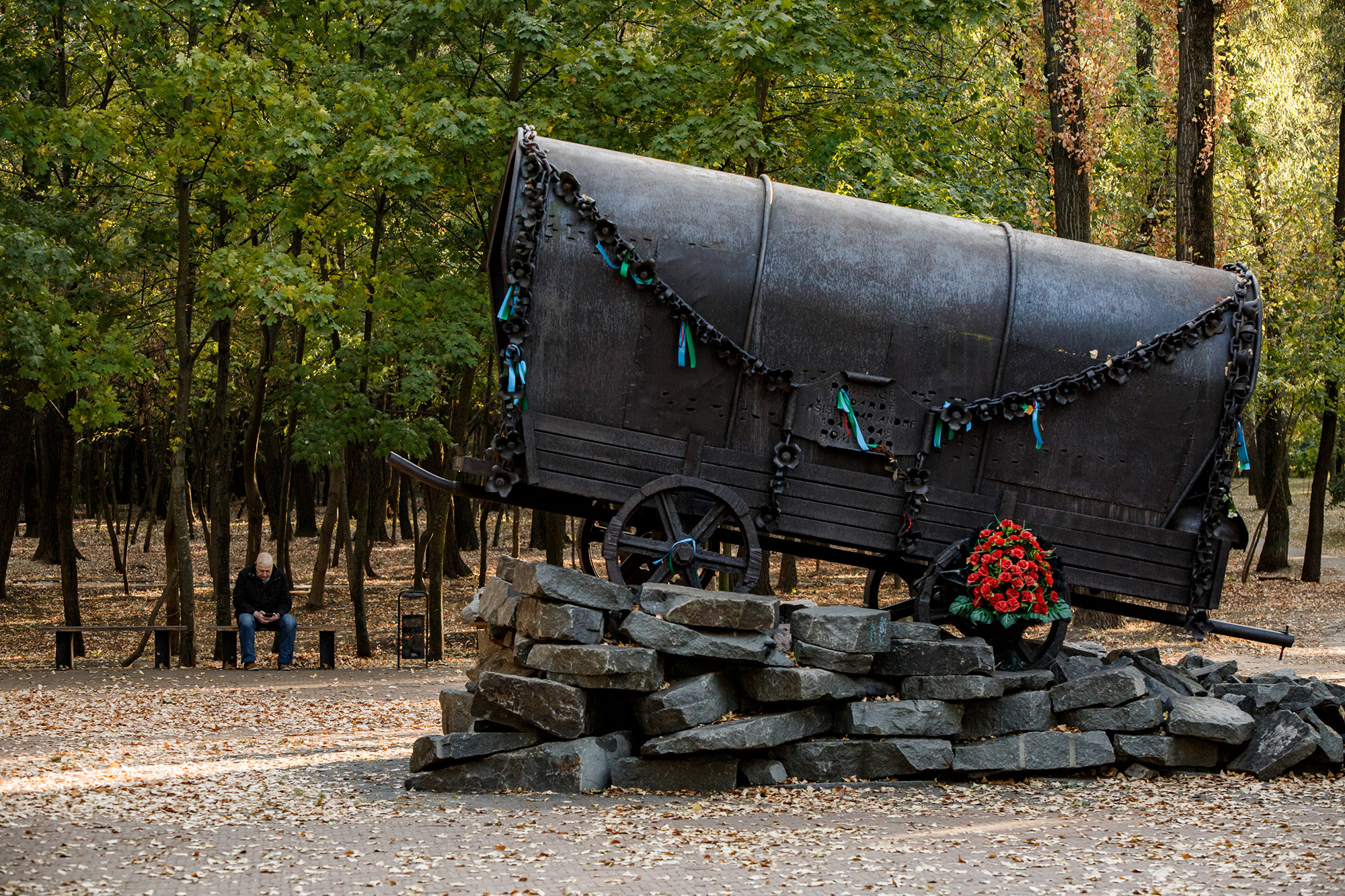
One of the most notable was the project of a Jewish Community and Cultural Center “Heritage”, which the Jewish relief organization called “Joint” wanted to build in Babyn Yar in the early 2000s.
Kyiv researcher Vitaliy Nakhmanovych ironically calls the idea of restoring the Jewish community in a place where it was destroyed as being “postmodern”. He works at the Kyiv History Museum and has published dozens of articles about Babyn Yar. Nakhmanovych responded to the project offered by Heritage with critical articles in the Jewish Observer newspaper, where he took the post of an editor. The project was eventually scuttled, but the whole situation prompted the researcher to get engaged in social activism. In 2003, together with Semen Hluzman, Ivan Dzyuba and now-deceased Myroslav Popovych, he set up the Babyn Yar Public Committee.
The Committee wanted Babyn Yar to finally have a nationally significant memorial, a state museum and a national reserve. A few years later, the reserve was founded, and a group of historians developed its concept.
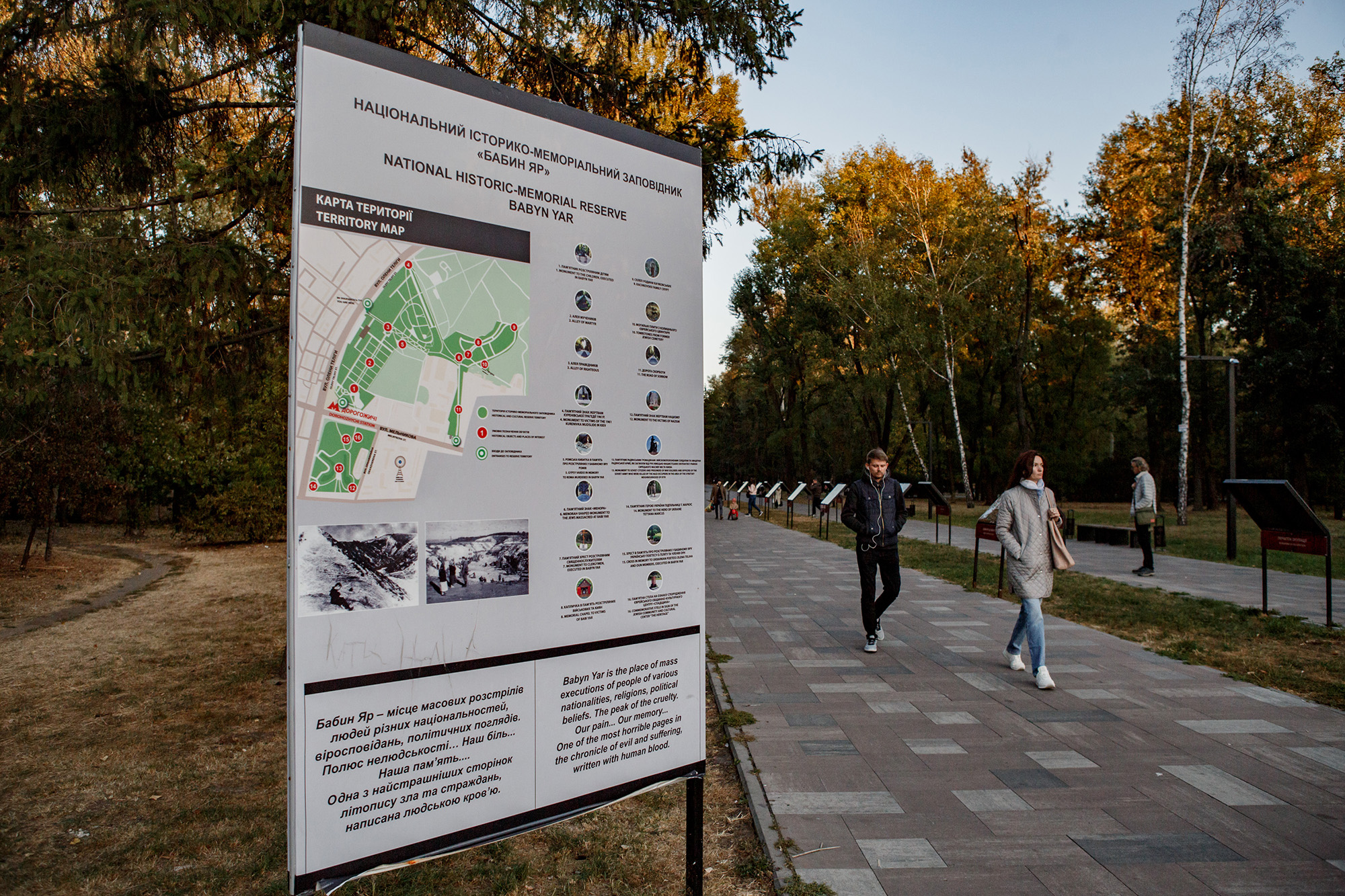
“The idea was to have a large area covering Babyn Yar: the place of shootings, burials, and all the surrounding cemeteries. It also needs a museum—not at the cemetery itself, obviously—that would tell the entire history of Babyn Yar,” says Nakhmanovych.
Today, the reserve exists, but Nakhmanovych calls it “imaginary”. He warns that coming here, you will, in fact, not see any reserve. Today, Babyn Yar is no longer a scrubby urban forest. Rather, it looks like a regular, yet not very well-kept, park with a few places of remembrance.
Nakhmanovych personally participated in this pursuit of memorialization. In 2015, the Canadian organization Ukrainian Jewish Encounter supported the establishment of the Memorial Park Babyn Yar—Dorohozhychi Necropolis, and Nakhmanovych coordinated the architecture tender that was eventually held, but the project was closed.
However, before now, no one has entered this field as confidently as the Babyn Yar Holocaust Memorial Center. Yana Barinova, its Executive Director, talks about her work passionately, using English words amply. It will be an “iconic project,” a “benchmark” for both Ukraine and the entire world, where “respect for the tragedy will be the core feeling conveyed by the memorial.”

Greetings from Russia
In the autumn of 2016, the Memorial Center publicly announced its intentions. And in November 2017, its historical narrative—the facts and approaches that will serve as the basis for the exhibition and the entire activity—was first discussed in public. In the grand hall of the Kyiv National University, Ukrainian Holocaust scholars and Jewish social and religious figures sat down to talk at a long table.
Yaakov Dov Bleich—Chief Rabbi of Kyiv and Ukraine—wished good luck and urged the implementation with the words “the best is the enemy of the good.”
Publisher Leonid Finberg complained that the history of Jews in Ukraine is again limited to the history of the Holocaust.
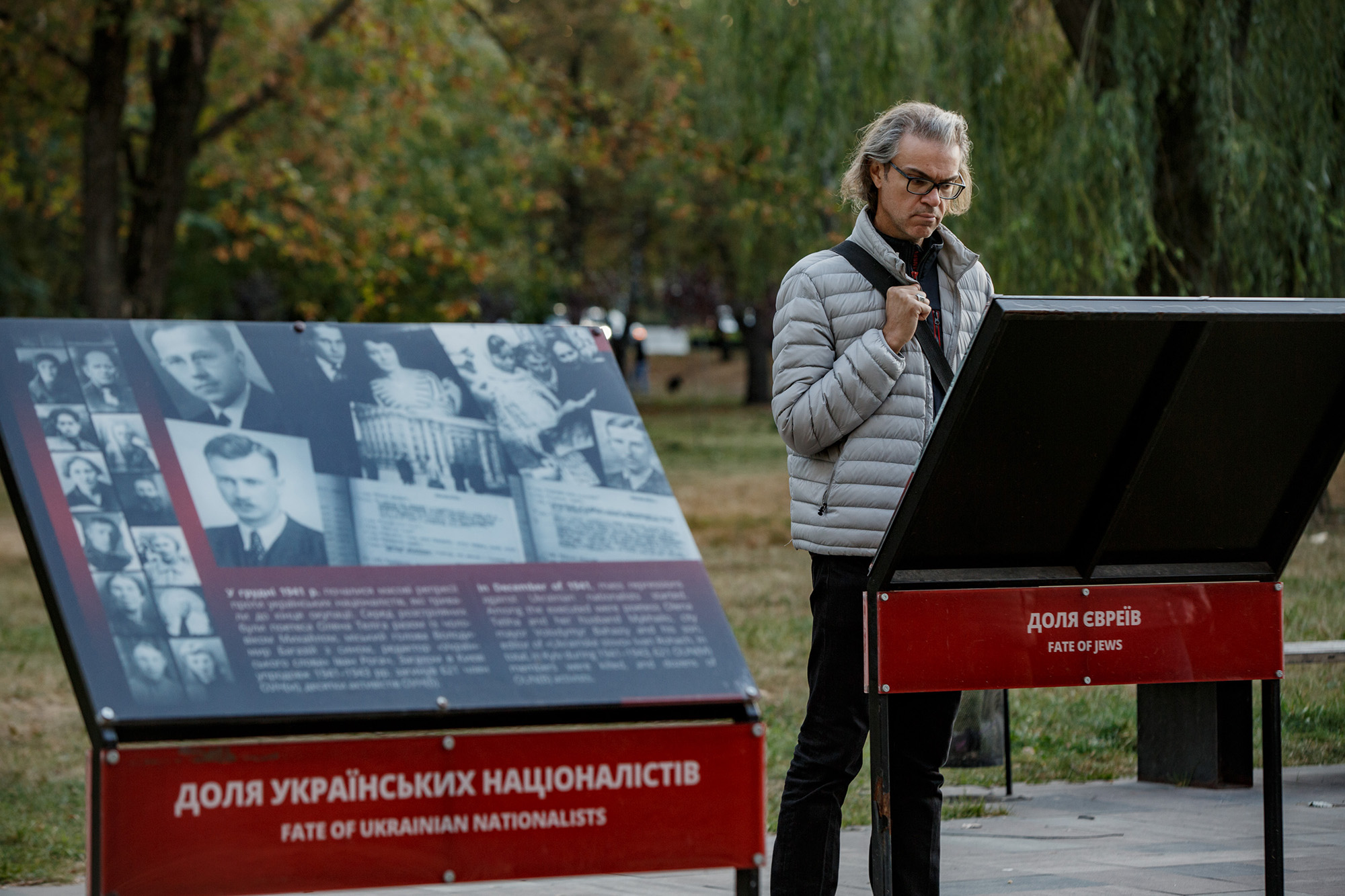
Historian Oleksandr Naiman said that more attention should be paid to the background for collaboration—the pogroms.
And researcher Vitaliy Nakhmanovych was concerned as to why the narrative paid so much attention to the topic of collaboration.
And so on.
In the same year of 2017, Ukrainian historians, who disagreed with the plans of the Memorial Center, created their own working group at the premises of the Institute of History of Ukraine of the National Academy of Science. And they wrote their own concept for the memorialization of Babyn Yar. According to Anatoly Podolsky, they believed the actions of the Memorial Center were “unjust.”
This “injustice” has two dimensions—scientific and social.
The historians disagree with the Memorial Center’s idea to build the Holocaust Museum at Babyn Yar, as this would seem as if Kyiv secured the core role in the tragedy. They also believe the memorial should commemorate not only the Jews, but everyone who died there. Another point of disagreement is that the Memorial Center addresses the Holocaust within the territory of the USSR. They see it as preserving the Soviet model of remembrance. Furthermore, they believe that collaborators and Ukrainian nationalists should not be equated.
To ask Yana Barinova what she thinks of the criticism, I yet again go up to the 14th floor of the office tower. Barinova is friendly yet serious. On her desk, I notice some printed information about me, with the photo and some links.
“I am so tired of saying that our project is based on the principles of memorializing each and every victim and being true to history,” sighs Barinova.
The historians disagree with the Memorial Center’s idea to build the Holocaust Museum at Babyn Yar, as this would seem as if Kyiv secured the core role in the tragedy. They also believe the memorial should commemorate not only the Jews, but everyone who died there

She is a doctoral student at Sorbonne, where she is working on a dissertation on how new media help to preserve the memory of traumatic events. On free Sundays, she holds excursions to Babyn Yar. She used to work in Kyiv art galleries, and before that, at the Kremlin Multimedia company where she prepared the Icons of Russia album about symbols of Russia.
Now, it is time to look at the social perspective of the “injustice” of the Memorial Center’s work, which can be worded as follows: while being at war with Russia, is it acceptable to work on a project that is so important for Ukraine but funded by Russian businessmen?
The Memorial Center’s supervisory board has twelve members. And only a few of them are directly linked to Ukraine. Among those sponsoring the Memorial Center, Barinova names Pinchuk, Ronald Lauder (an American), and another three persons, whom we’ve already seen on the photo earlier, wearing their dark suits: Mikhail Friedman and Herman Khan from Russia’s Alpha Group Consortium, as well as Moscow property developer Pavel Fuchs.
Yana Barinova claims that any concerns that the project might have a Russian ideological component are a manipulation, since these people are well-known philanthropists of Ukrainian origin (Pavel Fuchs is even an Honored Citizen of Kharkiv).
“Some of them have relatives who were shot in Babyn Yar, and it is natural that they are willing to honor the memory of the tragedy.”
Surely, a person cannot be deprived of their right to honor memory of their executed relatives. However, others look at the Memorial Center’s initiative through a wider lens:
“I was invited to cooperate with the Memorial Center. I said I could not, because their money comes from Russia, and Russia is the enemy of my country,” says Anatoly Podolsky.
“It’s not about their money, but their minds. Their minds are in the Kremlin. That is why this concept is Russian, pro-Soviet,” stresses Vitaliy Nakhmanovych.
“I see their approach as colonial. They treat me and the Ukrainian Center for Holocaust Studies as contractors to be instructed what to do and how to do it. And the instructions will be coming from the citizens of a foreign country.” Podolsky believes that for such a memorial, at least 51% of the content and money should come from Ukraine.
He calls the Memorial Center a “weird foundation” and says that if the state showed some concern for the Babyn Yar issue and if the reserve operated properly, “there wouldn’t be any other foundations emerging.”
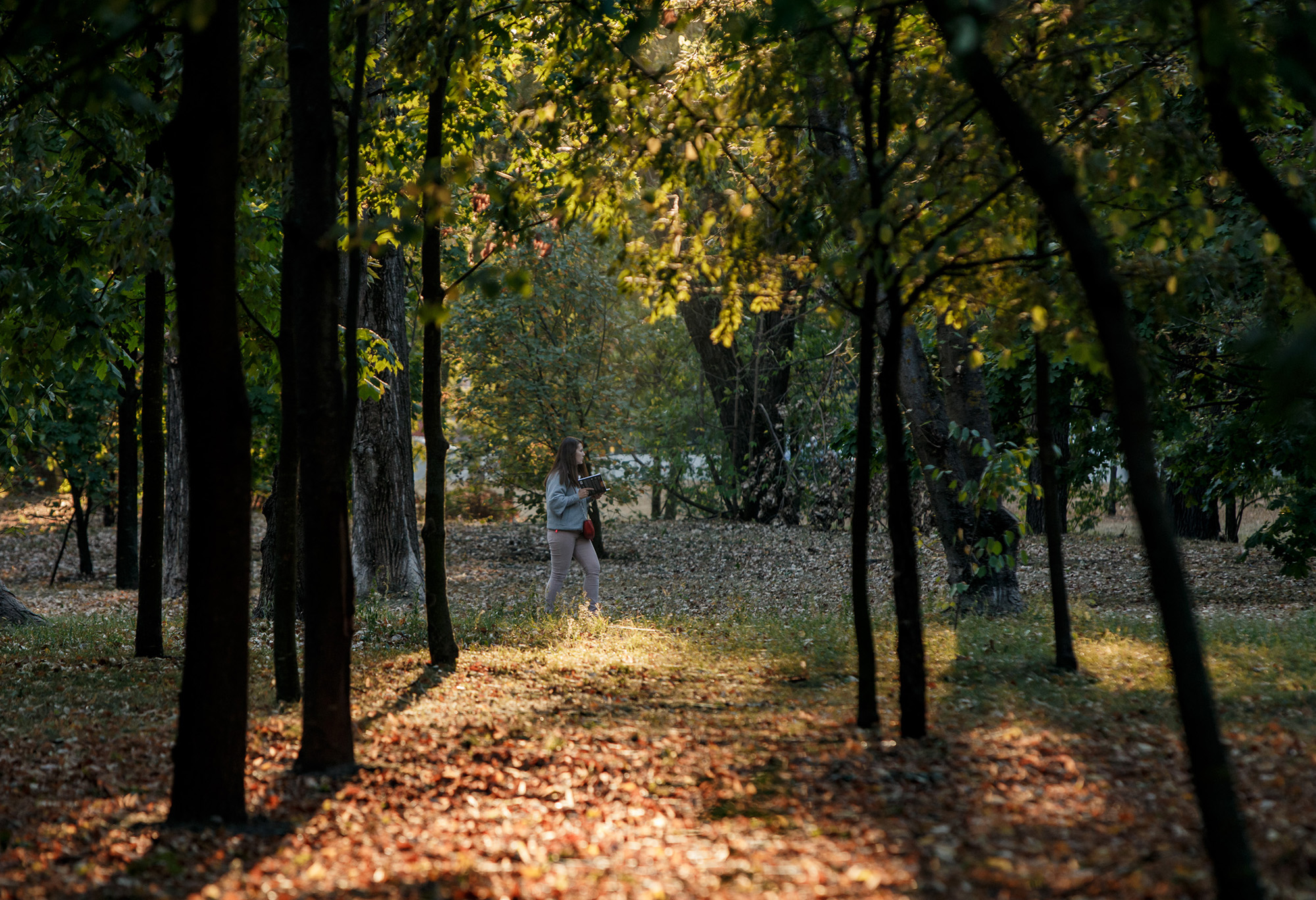
“This organization is registered in Ukraine. I have not seen these people having any influence on the project,” argues researcher Vladyslav Hrynevych, who is involved in both the activities of the Memorial Center and the working group of the historians who develop the “state” memorialization concept.
The discussion is ongoing. Meanwhile, in September 2019, the Memorial Center announced the results of the architecture tender. And as part of the implementation of the “state” concept, a modest building that was returned to public ownership in 2016 will be renovated to house the Babyn Yar Museum.
44 Illienko Street
The former two-story administration of the old Jewish cemetery located at 44 Yuriy Illienko Street is the only building left in the Babyn Yar area that was standing at the time of the shootings. In the wartime, it was the headquarters of the Einsatzkommando—the Nazi task force responsible for the murders.

In fact, all of Babyn Yar and its surroundings were used as cemeteries. Of them, only Lukianivske cemetery is preserved. The Nazis started destroying the Jewish cemetery and the Soviet government finished the job in the early 1960’s. The remaining tombstones were excavated and dropped into the nearby ditch.
Mykhailo Hutor takes me to a place called Repyakhiv Yar and tells me that in the summer of 2017, the reserve workers were taking tombstones out of there (the activities were financed by the Memorial Center). More than 70 matzevahs were taken out and placed in a row on the grass to resemble a cemetery. The park visitors called the police—they thought it was an illegal burial.
The future museum at Illienko Street is having its floors replaced. While Hutor describes how photos will be projected from the first to the ground floor through the floor opening, a builder emerges on the wooden bridge.
“What are you doing here?” He does not recognize the employee of the reserve and wants us to leave. No wonder—it is Sunday, after all.
“I have no weekends,” Hutor says abruptly.
It is a standard world practice to have a museum campus where different institutions co-exist within one territory, telling different stories. The Memorial Center is the museum of the phenomenon, while the idea behind the concurrent project, the “state” museum, is the museum of the place
He knows the small state museum cannot compete with the affluent neighborhood Memorial Center. But, Hutor says, this building is a living witness to those tragic events.
Two-in-one
Yana Barinova believes that Babyn Yar will have both a state project and the Holocaust Memorial Center—a non-governmental project which the critics call “private”, “pro-Kremlin” and “anti-Ukrainian”.
“It is a standard world practice to have a museum campus where different institutions co-exist within one territory, telling different stories,” says Barinova. She sees no threat in having several museums there, and explains that the Memorial Center is the museum of the phenomenon, while the idea behind the concurrent project, the “state” museum, is the museum of the place.
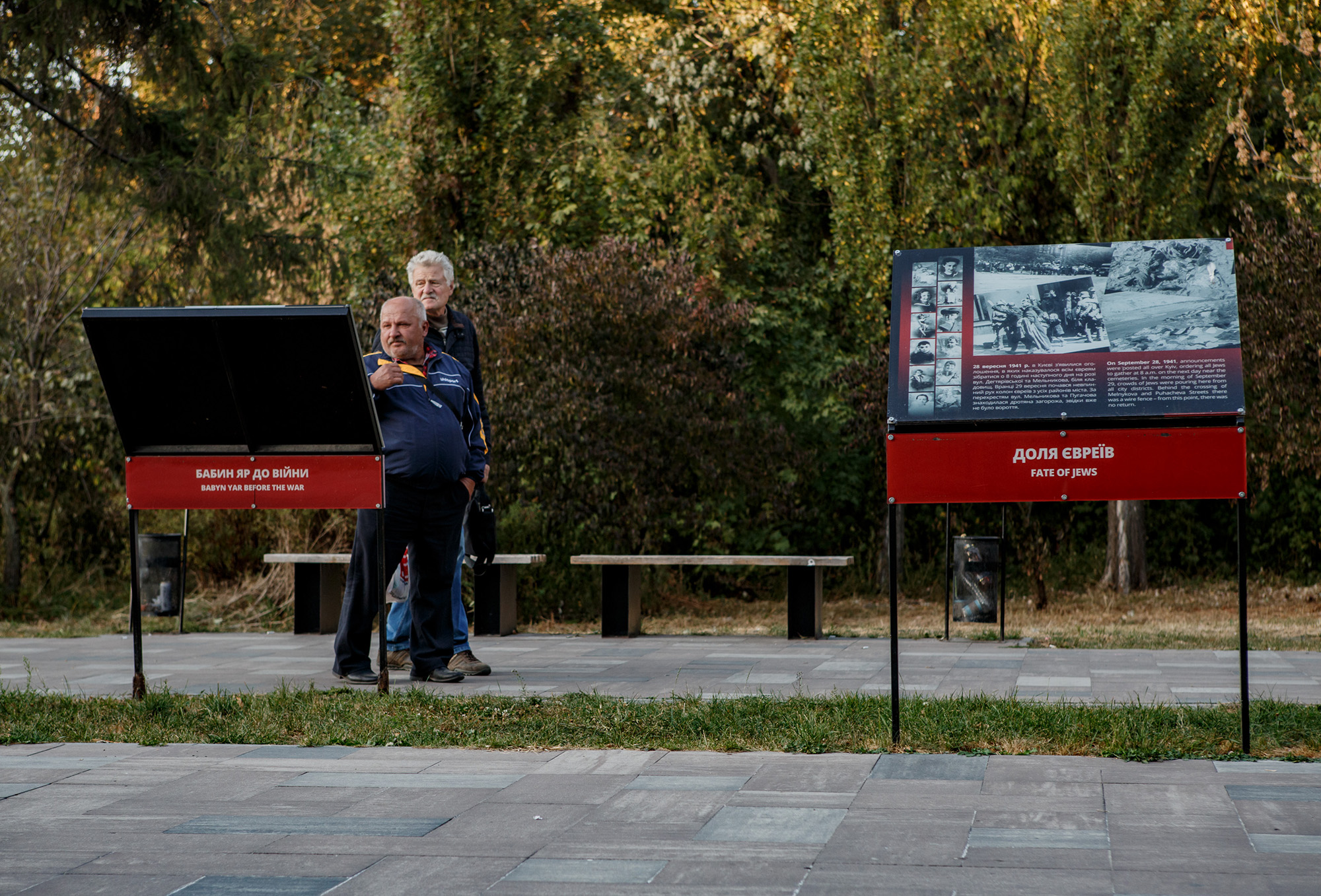
All in all, Babyn Yar might get both the state memorial complex and the Babyn Yar Holocaust Memorial Center. The first one will include the Memorial Park Babyn Yar—Dorohozhychi Necropolis (greetings from Canada), the Ukrainian Holocaust Museum, Babyn Yar Memorial Museum, and all the landmarks already in place. Of them, establishing a museum at 44 Illienka Street seems the only one that is realistic so far. The second one will become a museum, educational and research center of the Holocaust “in the territories of Ukraine, Eastern Europe and the former Soviet Union.” Making this puzzle into a single campus is a real challenge.
[This publication was created with support of the Royal Norwegian Embassy in Ukraine. The views and opinions expressed in this publication are those of the authors and do not necessarily reflect the official position of the Norwegian government.]
Have read to the end! What's next?
Next is a small request.
Building media in Ukraine is not an easy task. It requires special experience, knowledge and special resources. Literary reportage is also one of the most expensive genres of journalism. That's why we need your support.
We have no investors or "friendly politicians" - we’ve always been independent. The only dependence we would like to have is dependence on educated and caring readers. We invite you to support us on Patreon, so we could create more valuable things with your help.
Reports130
More